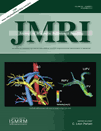MR proton spectroscopy for myocardial lipid deposition quantification: A quantitative comparison between 1.5T and 3T
Abstract
Purpose:
To evaluate 3T magnetic resonance spectroscopy (MRS)-derived myocardial fat-signal fractions in comparison with those from 1.5T MRS.
Materials and Methods:
We conducted phantom, ex vivo and in vivo myocardial specimen evaluations at both 1.5T and 3T using 1H-MRS. A phantom with nine fat-water emulsions was constructed to assess the accuracy of the spectroscopy measurements. Ex vivo spectroscopy data were acquired in 70 segments from 21 autopsy heart slices. In vivo spectroscopy data were acquired in the interventricular septum from 22 human volunteers.
Results:
Phantom experiments demonstrated that 1.5T and 3T measurements were highly correlated with the reference values (r = 0.78, P < 0.05). The ex vivo and in vivo experiments demonstrated an increase in signal-to-noise ratio (SNR) of 45 ± 73% and 76 ± 72% at 3T compared to 1.5T (P < 0.05). The mean fat-signal fraction was similar at 3T and 1.5T (1.11 ± 1.18 vs. 1.00 ± 1.09, respectively, P = NS) in ex vivo studies but were significantly different in the in vivo studies (2.47 ± 1.46 vs. 1.56 ± 1.34, P < 0.05). The fat-signal fractions from 3T and 1.5T correlated fairly well in all experiments.
Conclusion:
3T MRS has significantly greater SNR and could potentially be more accurate as compared to 1.5T for quantification of myocardial fat fraction in in vivo studies. J. Magn. Reson. Imaging 2012;36:1222–1230. © 2012 Wiley Periodicals, Inc.




